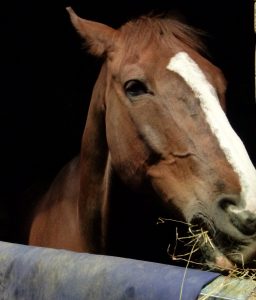This is a significant disorder which can affect performance, weight and temperament. It is probably still under-diagnosed.as the clinical signs for gastric ulcers are subtle and can be confused with other conditions. However the greater accessibility of video gastroscopy has shown that the incidence in racehorses is over 80% and in competition horses up to 70%, making it one of the most common diseases of horses.
 The signs include:
The signs include:
Why does it happen?
The horse in its natural environment spends up to 16 hours per day feeding in a herd. The naturally acidic stomach contents are buffered by saliva produced in response to this regular eating and the glandular part of the stomach is protected by a mucous/bicarbonate protective layer with rapid cell turnover. In a stable or on poor grazing the horse spends less time eating with a lower volume of forage, so decreasing saliva production.
Treatment
Management needs to adjust to increase the frequency of feeding and the type of forage. A 4 week course of gastrogard may be prescibed where the severity and extent of the ulcers indicates.
Prognosis
Following treatment most horses show a big improvement in performance, with better temperament, better appetite and improved condition.
Liphook Equine Hospital – factsheet on Gastric Ulcers